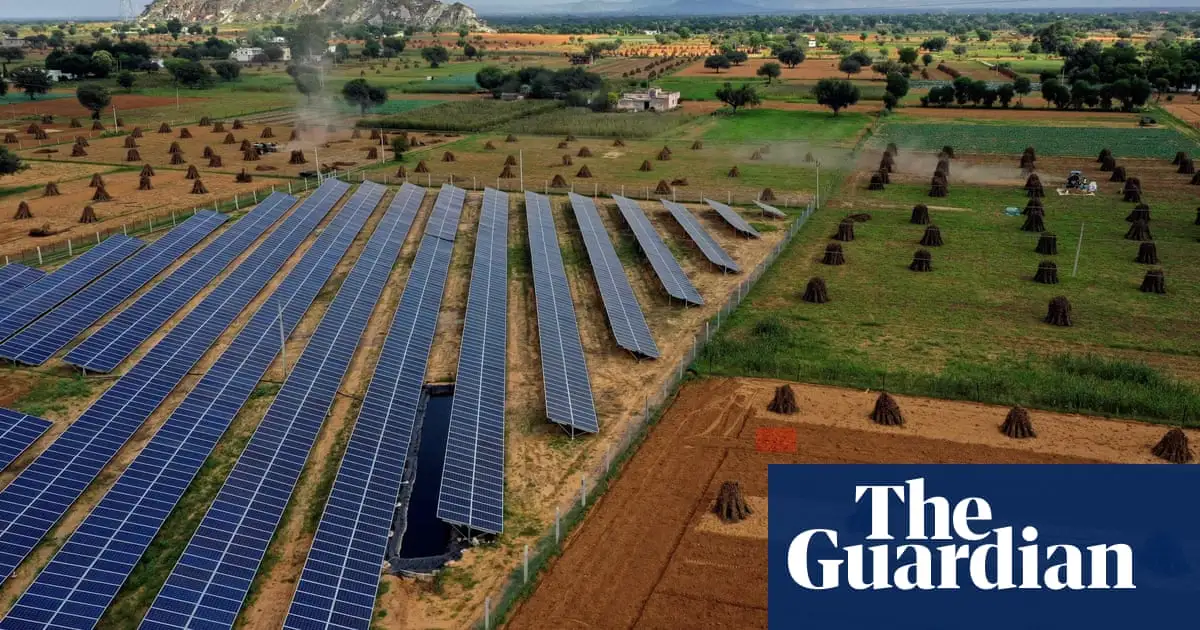- cross-posted to:
- [email protected]
- globalnews
- cross-posted to:
- [email protected]
- globalnews
Ministers have been urged to “open their eyes” to the need to build a vast network of new electricity grids to allow countries to hit climate goals, the chief of the world’s energy watchdog has said.
Fatih Birol, the executive director of the International Energy Agency (IEA), has warned that the equivalent of the entire global electricity grid – 80m km of grid – needs to be added or refurbished by 2040 to hit climate targets and ensure reliable power supplies.
Global investment in energy grids needs to double to more than $600bn (£492bn) a year by 2030 to hit national climate targets after “over a decade of stagnation at the global level”, the IEA said.
This is one of the biggest issues we have in the power industry, in my opinion. The market just isn’t set up right to cover this, distribution and transmission network operators have little incentive to build infrastructure and often try to pass off the cost to their customers. When you build a generation site or a factory, you also pay for all the network operator’s equipment - even though they’re the ones who end up owning it. For large individual sites it this might be viable, but when it comes to the infrastructure that will service many smaller sites the network operators tend to sit back until someone pays them.
this is a a perfect example of why the power industry should never ever be privatised.
Lots of posts on this issue today. We also need support for rooftop solar, community solar and battery installations. For funding: stop subsidizing fossil fuel and meat industries.
Unfortunately solar has left a bad taste in everyone’s mouth, because solar in general has very low margins and was often done by fly-by-night contractors. They cut corners, particularly with cable sizes, leading to them catching fire. These problems have been more or less resolved now, at least for solar farms on the ground in a field, however people are still wary of rooftop solar.
There’s also the issue that you need to clean the panels fairly regularly, otherwise the performance degrades. In a field this can be pretty easy, often they just contract it out to the farmer who owns the land and he just drives his tractor with a cleaning attachment on the back between the rows of panels. However, on roofs this can be much more difficult.
Battery or BESS systems are being built. This is a new sector that’s still finding its feet, the technology is more or less there but the packaged systems are still developing.
Community generation in general is something I’m all for. The first wind farm I ever visited was entirely community owned by a town in Wales, they had a rugby player kick a ball over the blades when they opened it lol. I’ve been back a few times, they have kids up there to show them how renewables work, and they also have this little exercise bike with a dynamo which drives a bunch of things (light bulb, fan, USB, an AC mains socket) so all the kids can see how much energy they need to power stuff.
Unfortunately solar has left a bad taste in everyone’s mouth, because solar in general has very low margins and was often done by fly-by-night contractors. They cut corners, particularly with cable sizes, leading to them catching fire. These problems have been more or less resolved now, at least for solar farms on the ground in a field, however people are still wary of rooftop solar.
Huh, I installed solar more than 20 years ago and have been following the industry since then. This is the first I’ve heard that “everyone” has had a problem with it. That kind of negativity sounds like what electric companies would like us to believe. What’s the source for this?
Ok, so maybe “everyone” is a slight exaggeration. However it is a known problem in the industry, in which I work. I’ve seen some crazy shit in solar farms, including the dodgiest HV switchgear I’ve ever encountered - and as an HV commissioning engineer I’ve seen quite a few.
You don’t have to look far to find stories about solar farms catching on fire.
Yeah, the count of fires is up…
Shaw found that there were 56 recorded solar system fires in 2018, the most recent year of reported data, which is up 36% from the 41 recorded in 2017. In 2015, the first year that Shaw got data from USFA, there were 25. Since 2015 the Fire Administration has recorded 155 fires caused by solar installations, with 84 being residential systems and 71 being non-residential." https://www.pv-magazine.com/2020/04/23/solar-system-fires-are-on-the-rise-in-the-u-s/
…but so is the count of installations. There are probably more than 56 installations in my town, in my state there are 1,841,539 (https://www.seia.org/state-solar-policy/california-solar). The rising count is not a reason to dis the technology as a whole.
I wasn’t dissing the technology, I was dissing the installers who cut corners, which typically is the root cause of the fires. Cheap equipment and undersized cables. If anything, fires should be going down as the industry matures - even in spite of the number of installations going up.
Also, I gave you a generic search link. I’m not in the US, but I knew the problem was the same all over.



